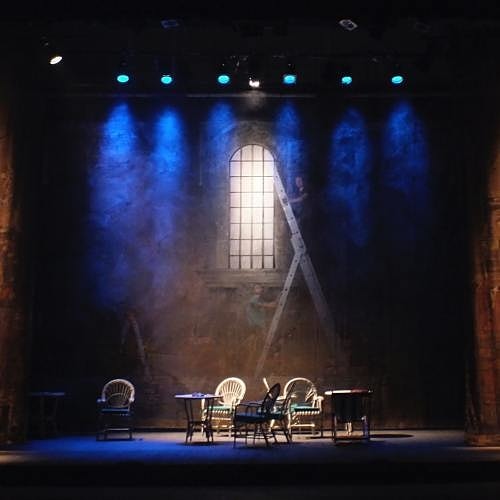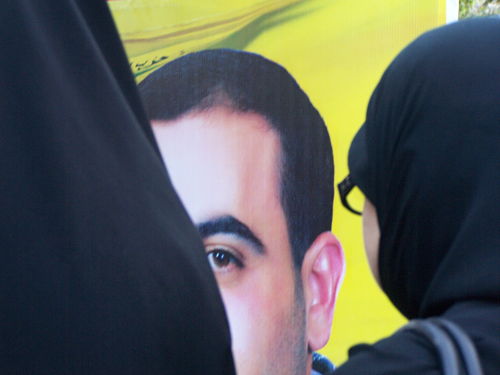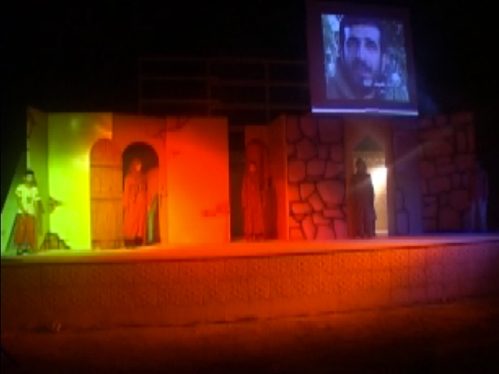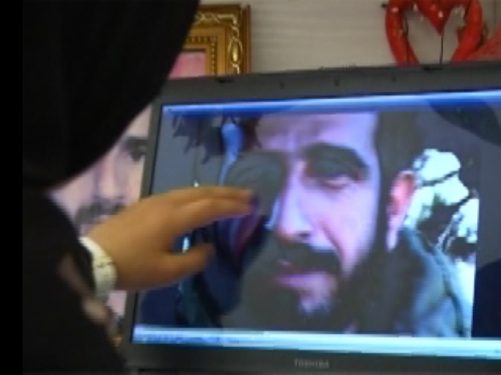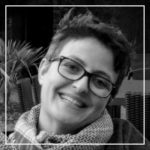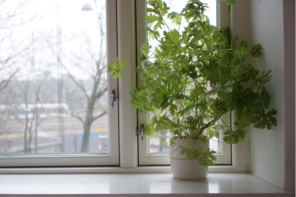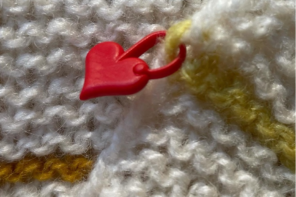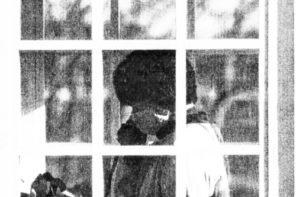“When my father went, he knew he let me in safe hands. It means that instead of one hand, I have a million hands; instead of one hug, I have hearts filled with love and tenderness. That’s why I ask you not to spoil me; guide me, don’t let me and if you see me lose my way, take me back, in the name of the martyr’s blood, don’t let me down”
‘Alî, a 10-year old boy in Tears and Dreams, 2009, Lebanon
‘Alî is a fictional character, imagined by Fatme who wrote and directed the play Tears and Dreams a decade ago. She wrote it in the aftermath of the 2006 Israeli war in Lebanon and it was produced by the Hizbullah’s local women’s committee. It was performed in Fatme’s hometown village, in the Nabatiya region of South Lebanon. Fatme is a Hizbullah supporter; she works as a freelance journalist and producer for several television and radio channels (including, but not exclusively, Al-Manâr, the official channel of Hizbullah, al-Nûr its official radio and Al-Ahed, its official online media). The play puts children on the stage, supposedly orphans of martyred fathers, who tell their dreams, which they otherwise never enunciate publicly.
How can a theatre play make the martyrs present for their children and, broadly, for the community as a whole? Based on years of fieldwork experience in Hizbullah-dominated South Lebanon, I show that the play is a way of celebrating the dead but also a way to ‘make community’ by encouraging the living to assume untold commitments to the political collective. As a writer, Fatme – like others when they speak about a martyr – tries to “sculpt the image of the perfect testimony” (Baslez 2007: 10). What is that cultural product and what does it bring to the stage?
How can a theatre play make the martyrs present for their children and, broadly, for the community as a whole?
“Tears and dreams”
Fatme mixes several techniques to bring the martyr onto the stage. There are two parts to her play, one on stage, with children acting, and one on screen, which shows a TV documentary about a martyr, Khâled, and his daughter Zahraa. The images are from the leftover footage of Khâled’s official will, the parts where he may have mixed up his words, sneezed, or whatever else may have disrupted the recording of something as formal as one’s will. Fatme shot that documentary a few months before the performance of the play. It was aired on Al-Manâr. Already in the aftermath of the 2006 war, she had told me she wanted to work on the martyrs’ families. That is when she first heard about Zahraa, a 10-year old girl whose father died during the war.
The parts on stage and on screen represent an integrated whole. In the play, the children tell their dreams and Fatme’s voice-over explains the purpose, in a classic introduction to the concept of martyrdom. In the documentary, everything identifies the man on screen as a martyr: the religious phrases, the iconographic codes (Chaib 2010) and the subtitle “the martyr Khâled.” By first writing and then telling his will to the camera, the living fighter explains his cause but, at the same time, he also projects himself in his own death. The play mixes self-narrative – the one by Khâled – and an unusual narrative about martyrs – the one by the martyr’s children.
This docu-drama has different levels: Fatme’s voice-over, the actors on stage, the TV documentary made from the recorded will of Khâled and interviews with Zahraa, his daughter. The documentary shows a fictional scene of intimacy between Zahraa and her dead father. The young girl acts as if she discovered the footage of her father’s will for the first time. She wipes the tears from his face, his face being on the computer screen. As Fâtme told me, however, Zahraa had seen the footage of her father’s will before the scene was shot.
The scene in which Khâled cries silently while recording his will was initially not supposed to be aired. When Fatme told me about this film for the first time, she said, “I shot two films, you’ll see. One will make you cry, the other will make you laugh… There is a guy, here, a fighter… He never cried in front of anybody but after seeing the film he cried for three days, he didn’t leave his house for three days.” Fatme explicitly wanted to show the emotions, the links between a martyr and his loved ones, she wanted to make people feel the loss. The loss that Zahraa feels, just like every child who loses a father. She also wanted to show that these men were very aware that they would lose something, something really important to them. More than life maybe. In the footage, Khâled cries while mentioning Zahraa, his favourite child and, as he cries, he explains to the cameraman that he cries for Fatima al-Zahraa, Muhammad’s daughter and Husayn’s mother. While crying for one’s own death is not seen as legitimate, it is considered a good thing to cry for Husayn’s family. So Khâled can legitimately cry for Zahraa according to the Shii dogma, using the ambiguity between the name of Husayn’s mother and his own daughter’s name. We can see this as a form of symbolic kinship, which daily connects the contemporary Shia community to Husayn’s family.
The fighter’s will: a polymorphic object and self-narrative
Let’s go back to Khâled’s will itself. The one aired on the theatre stage is not the one that was broadcasted by al-Manâr. Fatme had asked for permission to use the archives of the media of Hizbullah’s military branch, the Islamic Resistance, for her documentary. These archives are not open for at least one reason: there, the dead fighters’ wills are retained alongside the wills of the living fighters. If not systematic in the 1980s, writing a will is now mandatory for all fighters involved in the Islamic Resistance. And as the Islamic Resistance is a military faction, based on secrecy, they have to maintain confidentiality on who is involved in its military actions.
Therefore, Khâled’s will has several lives and refers to more than one temporality. First, the fighter writes his text. Then he gets ready for reading it to the camera, knowing perfectly well that once he dies it will be released. Thus, the fighter takes part in the process of building the perfect testimony, for himself and for the group he speaks to. He gives advice to his family, his companions and more broadly to the whole Hizbullah society with all the legitimacy of the martyr who sacrificed his life for the others. He asks people to behave well, to act religiously in everyday life and to carry on the fight. In a way, when Khâled writes his will, he is already in the afterlife while still alive, and, conversely, when people watch him speak, he is alive while dead [1].
Khâled’s will has several lives and refers to more than one temporality
In the play, even if the children are the subjects, the martyrs remain the main characters. At the end, Khâled – now a martyr – speaks directly to the audience, from the afterlife. In his will the martyr asks the group to live an ideal life, and his status gives him the legitimacy to do so. By doing so, he puts himself, as the member of an elite – the martyrs – at the centre of the mobilization devices built by Hizbullah.
Khâled’s legitimacy comes with his death as a martyr, but also from the vocabulary he uses. It is often close to the one the leaders of the party use (fight for the land, act religiously, etc). Nevertheless, his words may have more impact because, first, the audience perfectly knows the codes and, second, as a “normal” man, someone that could be a neighbour, a friend, a cousin, he is more familiar.
Here, the way Hizbullah changed the modus operandi of registering the fighters’ wills is important. Before the 2006 war, they were more tightly regulated, shot in closed rooms, the fighter talking only to the camera. After 2006, the will is shot on a meadow, and al-Manâr shows images of the men walking, smiling or laughing. The purpose is to convey the image of fighters who are like everybody. Furthermore, by showing footage of Khâled’s will, with him laughing and crying, Fatme creates an intimacy between the audience and the martyr. As a result of the legitimacy of his status and this staged proximity, his will does not fail to arouse emotional reactions in the audience.
A debt reaffirmed from the afterlife
If the martyr himself addresses his words to a wide audience, the children, too, explicitly talk to the public attending that day. A young boy on stage:
Don’t tell me it’s my turn to speak, I know I have to. I don’t want to write because what I want to say is buried in my heart. Don’t be mad at me if I say God has to leave his father to a child. But me, it hurts me when I see a son holding his father’s hand and I don’t. It hurts me when I see a dad teaching his son how to swim and I don’t. It hurts me when I see a son playing football with his dad and I don’t. It hurts me because they do and I don’t.
I have to become a yes, yes and yes, a million yes because, when my father went, he knew he let me in safe hands. It means that instead of one hand, I have a million hands; instead of one hug I have hearts filled with love and tenderness. That’s why I ask you not to spoil me; guide me, don’t let me and if you see me lose my way, take me back, in the name of the martyr’s blood, don’t let me down.
The boy does something similar to the martyr in his will. He enunciates the responsibility that is now the audience’s, pointing out that the public is alive and free, because his father sacrificed himself. Since the fighter gave his life for the group’s sake, the group now has to take responsibility for his child.
On stage, the children personify the martyrs. They testify to their fathers’ commitment and demand loyalty from the public to that commitment. With her work, Fâtme gives a polymorphic testimony of martyrs and martyrdom. At the end of the play, on screen, Khâled is very much alive; on stage, when his daughter Zahraa appears, he is very much dead yet present, via the screen. Through his smile, the tears on his daughter’s cheeks and her hesitating appearance, Khâled becomes the most powerful presence in the room.
In a way, Zahraa, as she embodies the loved ones left behind by the dead fighters, is her father on stage, a few years after his death: she appears to be the living presence of the martyr in the world the audience lives in.
In the aftermath of loss, the dead fighters become material for remembrance, which political parties can build on, making them very much present in the community’s everyday life.
The emotional reaction of the audience is a clue. People cry, applaud and, when Zahraa appears on stage and her father’s image is shown from behind the curtain, the message Fatme wants to transmit seems clear: children are the legacy of the martyrs. When Zahraa stops after her preliminary words (“Peace be upon you. I am Zahraa… I am Zahraa, the one my father cried for, I…”), the public reacts and supports her and who she represents in her father’s words: Fatima al-Zahraa after who he named her.
Hizbullah continuously adapts its discourse to the regional situation in which it is involved. Currently, this is the war in Syria. While Jerusalem used to be represented in almost all the martyrs’ portraits, now it is the mausoleum of Zaynab in Damascus that is omnipresent. Before that, as we have seen, the martyrs’ wills had slightly changed. Hizbullah’s self-narrative is constantly evolving, and the martyrs remain an essential part of it. Through artistic and documentary work like Fatme’s theatre play, a public self is generated that the martyrs embody, and by extension their children, too. In the aftermath of loss, the dead fighters become material for remembrance, which political parties can build on, making them very much present in the community’s everyday life.
[1] Here we can refer to Rabih Mroué and Ilyas Khuri’s video performance Three Posters (2000) about the wills of fighters from the Lebanese Communist Party, who carried out ‘suicide missions’ in the 1980s. While the fact that the wills are by suicide bombers changes their purpose, the authors’ reflection on the relationship between life and afterlife is very relevant. Cf. Ilyas Khuri, Rabih Mroué and Mona Abu Rayyan, “Three Posters: A Performance/Video” TDR: The Drama Review, 50, n°3 (2006): 182-191. https://www.muse.jhu.edu/article/201930
References
BASLEZ Marie-Françoise, 2007, Les persécutions dans l’Antiquité : Victimes, héros, martyrs, Paris, Fayard
CHAIB Kinda, 2010, “Hezbollah seen through its images: the representation of the martyr” in: The Shi’a Worlds and Iran, Sabrina Mervin (ed.), London, Saqi Books, p.115-139
Featured image by Stefano Stacchini on Unsplash

